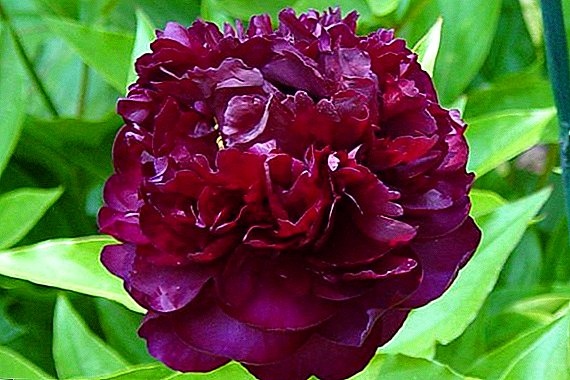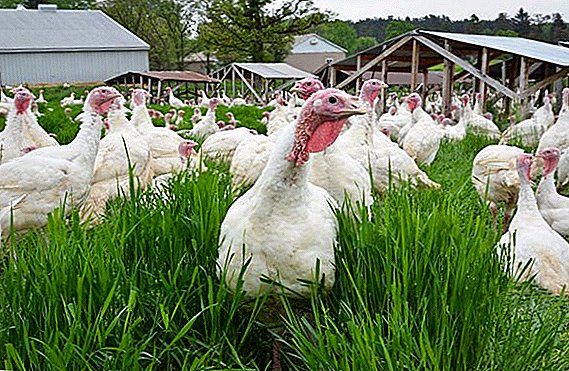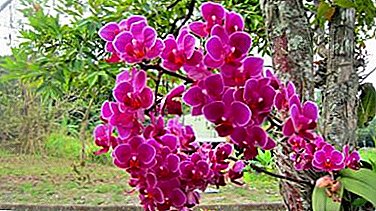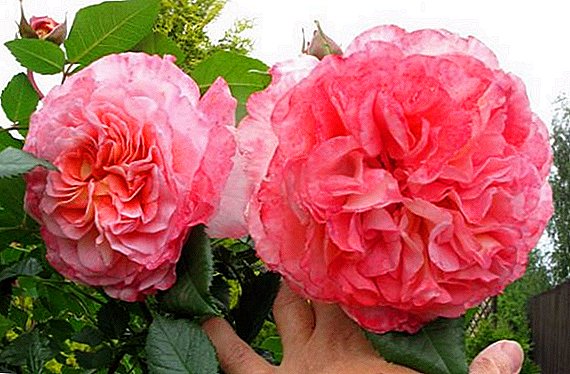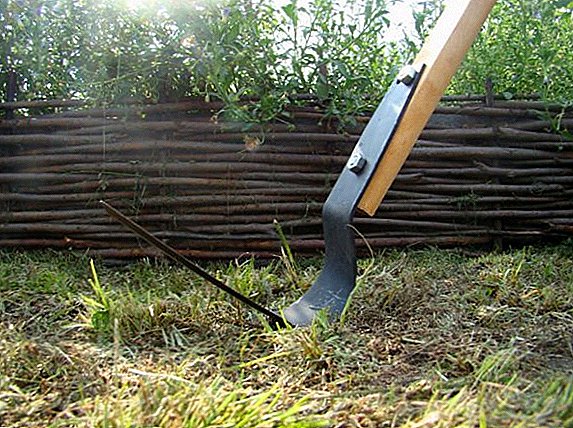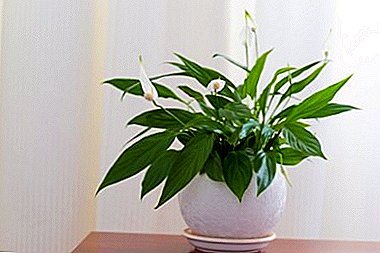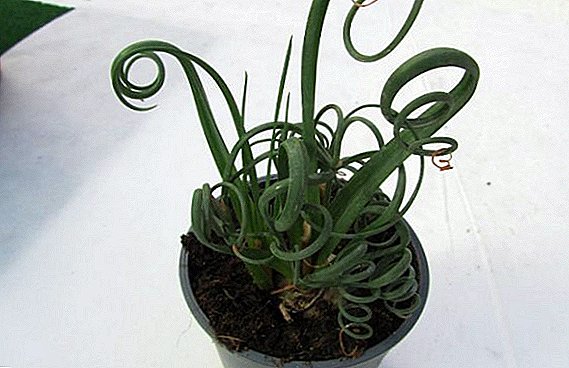 If you are a fan of exotic indoor plants and at the same time try to avoid the difficulties of care, the spiral book fully complies with these requirements. This material will help in choosing a plant, will tell about the features of care and cultivation - and then this flower will take its rightful place in your home collection.
If you are a fan of exotic indoor plants and at the same time try to avoid the difficulties of care, the spiral book fully complies with these requirements. This material will help in choosing a plant, will tell about the features of care and cultivation - and then this flower will take its rightful place in your home collection.
Botanical description of the album
Walk past this plant and not be surprised - it is unlikely to succeed. It is fascinating and tenderness of flowers, and the eccentricity of the leaves, like spiral curls from a beauty salon. In fact, "curls" - this is the leaves, though not quite normal. For a long time, this plant roamed in the botanical classification from family to family (lily, hyacinth) until it settled on the family of asparagus, where it still is. In addition, the album refers to the genus and bulbous, and succulents, thus surprising not only the appearance of this plant, but its botanical characteristics.
Did you know? All cacti are succulents, but not all succulents are cacti. The difference lies in the presence of spines, which replace the cacti leaves.
Spiral Albuka - a grassy bulbous perennial, originally from the southern hemisphere (South Africa). The bulb is small, 5 cm in diameter, yellowish-white, slightly flattened. Root system of white color, fibrous structure. Over time, a whole colony of “babies” of any size and age appears on the mother bulb. The leaves grow at the base of the bulbs collected in the outlet, at first wiry and straight, and then curled in a spiral. The number of spirals is about 20, the length of each in the untwisted form is 25-35 cm. Leaves of this form are not a fad of nature, but the result of acclimatization in the habitat.  The bulb and leaves of the album are able to accumulate moisture, which occurs in nature during the rainy season. The drier and hotter the climate becomes, the darker the leaves become and the tighter they spiral into. Due to this, the plant reduces evaporation through the leaves and retains the necessary moisture, and with the help of the leaves is involved in photosynthesis. Flowers bloom on long wax peduncles (50-60 cm) in April and early May, and are collected in a bunch of 10-20 inflorescences. The flowers look like a bell or a snowdrop with 6 petals, 3 of which are open horizontally, and 3 others are closed and down.
The bulb and leaves of the album are able to accumulate moisture, which occurs in nature during the rainy season. The drier and hotter the climate becomes, the darker the leaves become and the tighter they spiral into. Due to this, the plant reduces evaporation through the leaves and retains the necessary moisture, and with the help of the leaves is involved in photosynthesis. Flowers bloom on long wax peduncles (50-60 cm) in April and early May, and are collected in a bunch of 10-20 inflorescences. The flowers look like a bell or a snowdrop with 6 petals, 3 of which are open horizontally, and 3 others are closed and down.
Check out the most unusual colors in the world.
The color of the flowers is pale, greenish-yellow. The flowers have a faint unobtrusive aroma of vanilla baking. It should be noted that only varieties of albuka with yellowish flowers are endowed with aroma, but varieties with white flowers do not smell. Duration of flowering is 2-3 months. There are about 150 species of albuka, which grow not only in forest areas, but also in the desert, and in mountainous areas at an altitude of 2000 meters.
In addition to Spiral Albuka, the following species and varieties are most commonly used as home plants:
- Nelson's album;
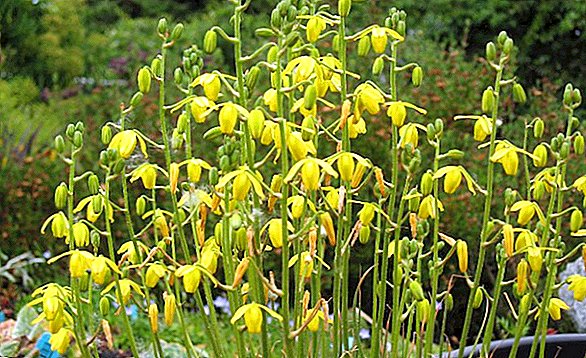
- Album of Canada;
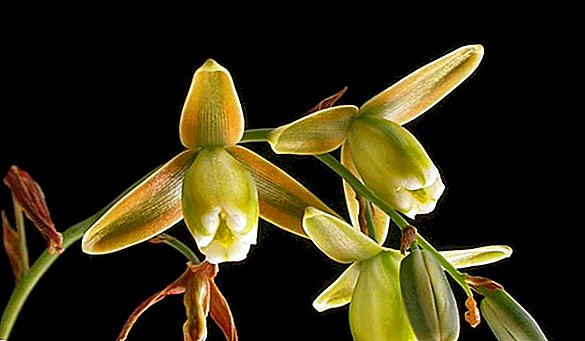
- Priliferous album;
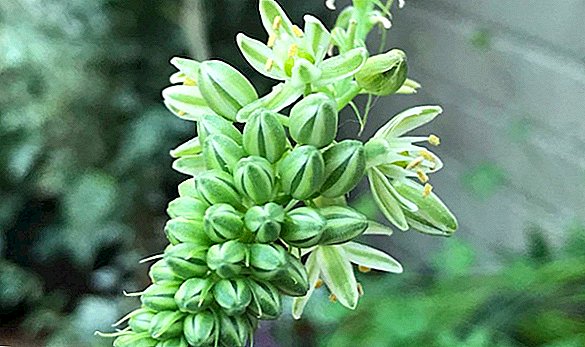
- Albuka Hot curl (Frizzle Sizzle) - Dutch selection variety.
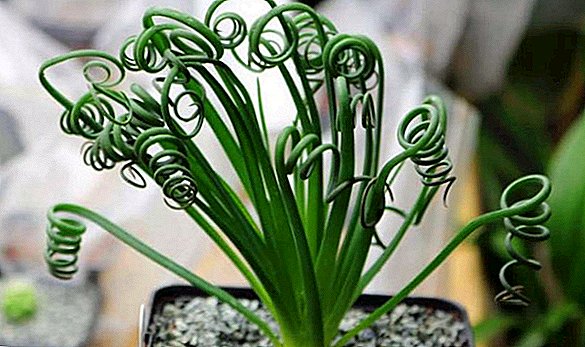
Conditions for growing at home
Spiral Albuka comes from regions with a hot and arid climate, therefore, when grown at home, it needs conditions close to natural factors and the natural vegetation cycle.
Location and lighting
When choosing a place for a light-loving album, you need to remember that the bright sunrays are not so terrible as shading:
- Choose a bright and well-lit place (windows are western and southern), because the brighter the lighting is - the more decorative the flower looks.
- Try to ensure the duration of daylight for 12 hours.
- In a shaded room or in cloudy weather, you must highlight the flower fitolamp.
Did you know? Artificial illumination, proposed in 1866 by Russian scientist Famitsynym A. S., proposed to make a breakthrough in the cultivation of domestic plants. This made it possible to adjust the intensity and duration of the light period.
Air temperature and humidity
The natural environment for the album is high temperature and low humidity during the flowering period, which corresponds to the summer period of the southern hemisphere. At home, the plant needs to create a natural development cycle. The rest period of the plant falls on our summer, and in the winter at the flower - a period of active growth and flowering. It was during this period that the album releases leaves, and in the middle of spring it blooms. Flowering lasts 2-3 months, then the plant smoothly retires, dropping the leaves.  To provoke flowering in April, during the rest period (November-December) it is necessary to ensure the following conditions with differences in day and night temperatures:
To provoke flowering in April, during the rest period (November-December) it is necessary to ensure the following conditions with differences in day and night temperatures:
- in the afternoon - not higher than + 10 ... + 15 ° С;
- at night - + 6 ... + 10 ° С is acceptable.
In summertime, the temperature is not so important - the plant can withstand temperatures of + 30 ° C, but the summer temperature in the range of + 24 ... + 28 ° C is considered optimal. An albuka desert resident will more easily take dry and hot air than heightened humidity. In addition to home cultivation, heat-loving album can be grown in the southern regions in open ground, where an abundance of light and heat will ensure a comfortable growth of the plant.
Important! It is necessary to protect Albuka from frosts and from temperatures below + 5 ° C - its bulb can become sick and die from it.
Home care
In order for the album to be pleased with abundant flowering and aesthetic appearance, it needs to provide thorough care at home.
Watering rules
Periods of rest and active growth require different rules for watering:
- During the rest period Plant care is only in maintaining the required temperature. Watering and feeding will not be needed.
- During the period of active growth (approximately from October) moderate watering is carried out only after the earthen clod has dried. Watered with distilled soft water at room temperature 1 time per month. Sufficiency of watering can be determined by the leaves - with an excess of moisture, they cease to curl.
 So that the plant does not exhaust itself by long flowering, you can resort to artificially plunging the album in a state of rest. To do this, reduce watering, stop feeding, increase the temperature of the content - under such conditions, the album will quickly sink into "sleep."
So that the plant does not exhaust itself by long flowering, you can resort to artificially plunging the album in a state of rest. To do this, reduce watering, stop feeding, increase the temperature of the content - under such conditions, the album will quickly sink into "sleep."Did you know? The word "succulent" is translated as "juice", which corresponds to the ability of such plants to store precious moisture in the leaves in a dry and hot climate.
Top dressing
When the plant grows and blooms, it needs more nutrients, so fertilizing is carried out once a month with complex mineral fertilizers for succulents. Such fertilizers are characterized by a low content of mineral substances. Albuka does not require soil fertility. Dilute fertilizer with water and combine with the next irrigation.
When leaving the book from the state of rest, nitrogen fertilizers are used for active growth of leaves and brighter color of flowers. After the beginning of flowering, preparations based on phosphorus and potassium are used. The end of flowering speaks of the transition of the album to a state of rest, during this period fertilizing is done last time. 
Pruning
Pruning per se album is not required. To preserve the decorative and attractive appearance, dry leaves are easily removed by simple pulling. Sanitary pruning may be needed only when transplanting to remove dry and damaged areas.
Transfer
In the spring, with the beginning of active growth, the plant needs to be transplanted into fresh earth. The soil mix should be light and loose to ensure moisture and breathability. You can use the purchased mixture for succulents or make the soil yourself by mixing equally soddy soil and coarse sand. Part of the sand can be replaced by zeolite or perlite.
You will be interested to know how to determine the acidity of the soil at home.
The container should be flat and shallow, 4–5 cm in diameter more than the bulb. Try not to damage the roots, and only remove dried and dead tissue. Albuka does not tolerate stagnant water, so it needs good drainage (pebbles, broken bricks, expanded clay, crushed foam). The bulb is placed in prepared pots with drainage and substrate, deepening no more than half the height. 
Breeding
Spiral Albuka breeds as a daughter-child of the bulbs, and seeds.
Bulbs
Bulb reproduction is simpler and more reliable - young plants obtained in this way fully retain the characteristics of the parent, they are stronger and more resistant to diseases. In the fall, the baby bulbs are carefully separated from the mother plant and transplanted into small containers as an adult plant. You can plant the bulbs in a container, without deepening and keeping a distance of 5 cm between them. After 2 weeks sprouts will appear, and you can start watering without over-wetting.
Onion plants are also considered: tulip, narcissus, freesia, hippeastrum, zephyranthes and gladiolus.
A young plant may bloom as early as next spring. Albuka may not settle down if poor seed is used, conditions are maintained or the soil mix is incorrectly selected. It is possible to propagate the albuka and dividing the main bulb, when it is not fully cut into 2-3 pieces and waiting for the sprouts to appear on each division. But this method is dangerous and can cause the death of the bulb. 
Seeds
Albuka is a self-pollinating plant. At the end of flowering in the place of inflorescences the fruit-boxes with seeds are formed. Only fresh seeds are suitable for planting. Collected seeds can be sown immediately. Slightly pressing in, they need to be decomposed into a soil mixture, sprinkled with water.
Important! Albuka seeds remain viable for a short period - just six months.
Rassadnuyu capacity should be placed in a warm place (+ 25 ... + 28 ° C), cover with glass or foil, ventilate daily and make sure that the soil remains wet. Shoots will appear after 14 days in the form of thin green blades of grass. In the first year, bulbs are formed, but it will take 3 years to wait for flowering.
Diseases and pests
Spiral Albuka is characterized by resistance to pest damage and diseases.
But under adverse conditions, when the plant is weakened, or infection from neighboring flowers is possible:
- Spider mite - manifested by the presence of cobwebs on the leaves and soil. The leaves are twisted and fall off. Treatment is required fungicide ("Fundazol", "Tiovit Jet").
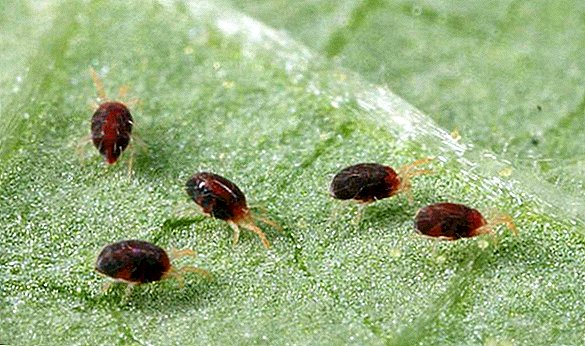
- Mite root - this parasite lives in the ground, extends to weakened and damaged bulbs. Chemicals (Apollo, Di-68, Kemidis, Rogor S) will help in the fight against this pest. Means it is desirable to alternate in order to avoid habituation, and the planting material must be pre-treated with colloidal sulfur.
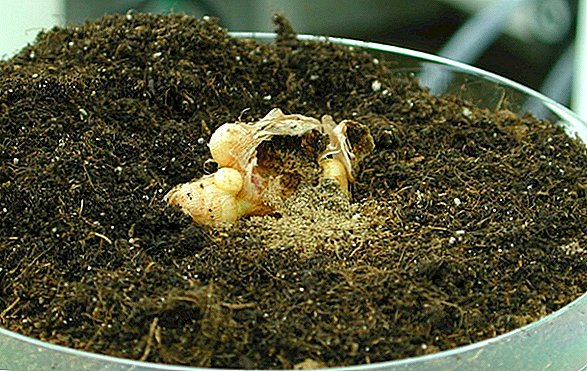
Carefully inspecting the plant and the soil, you can notice signs of disease or lack of care in time:
- Leaves do not curl - poor lighting, low temperature, excess feedings, peculiarities of the species.
- Bulb rotting - waterlogging of soil mixture, water stagnation. It is unlikely that it will be possible to save such an onion, but for prevention it is necessary to regulate watering carefully.
- Leaves with brown spots - fungal disease (rust). Affected leaves must be removed and the plant treated with fungicides.
- Falling leaves - strong shading, a sharp temperature drop, cold draft, excess or lack of moisture.
- The plant is elongated, but does not bloom - poor lighting.
- Lots of greenery and lack of flowers - a surplus of nitrogen fertilizers.
Learn how to deal with spider mites.
Spiral Albuka is valued not only for delicate flowers with a delicate aroma, but also for surprisingly curled leaves. It is unpretentious and will not cause difficulties to care even for a beginner florist. Observing all the rules and conditions of cultivation, as well as the correct cycle of the growing season, you get a blooming and exotic decorative flower.









